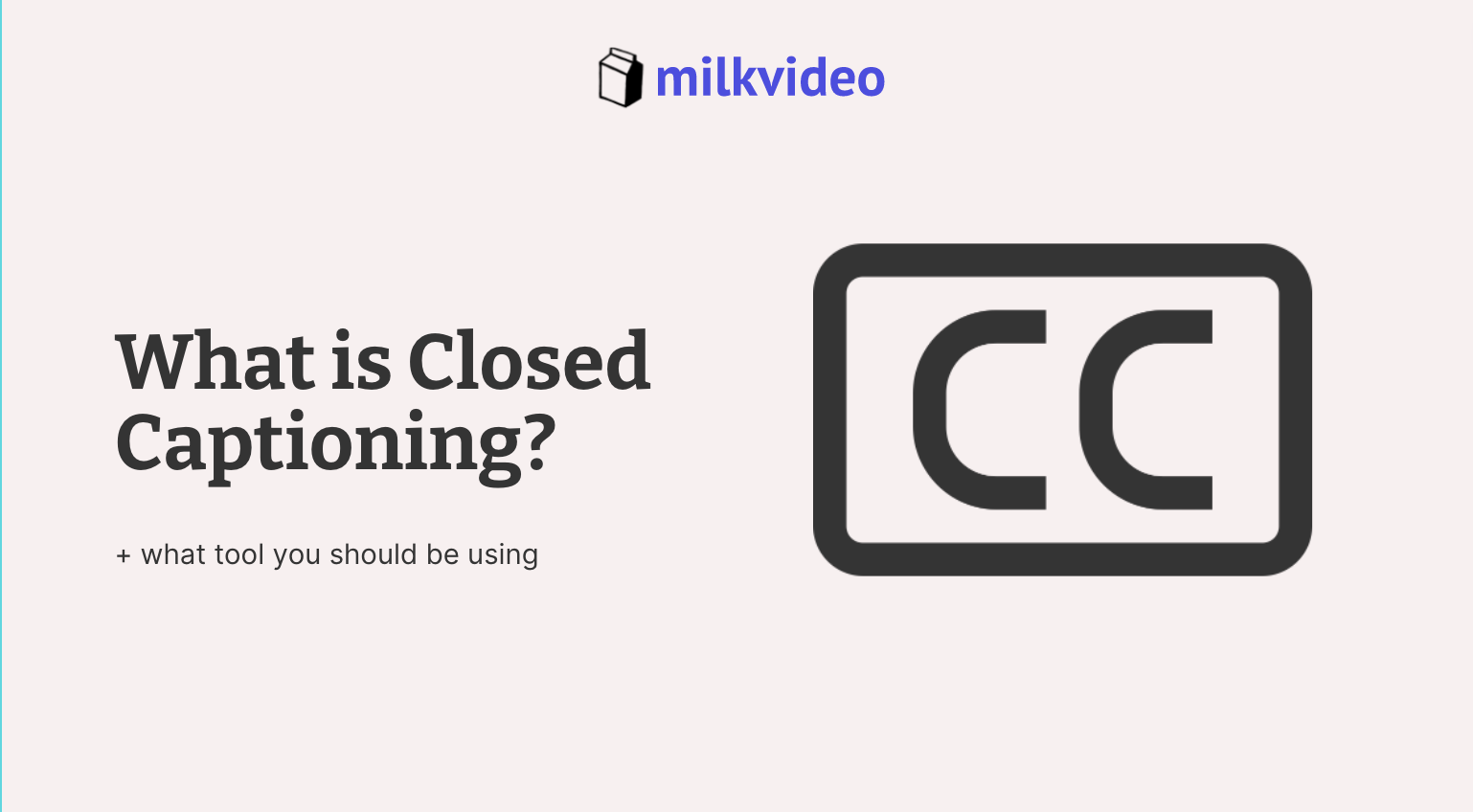What is Closed Captioning?

Closed captioning is an important part of making your content accessible and maximizing viewer engagement – but what exactly are they? Keep reading to learn more about what closed captions are, why they are important, and how you can start adding them to your video content.
Closed Captioning: The Basics
Closed captioning refers to the text that is displayed during a video to give viewers additional information about what is happening on the screen. The audio is transcribed and displayed as text on the bottom of the screen, but the spoken words are not the only things written out.
When you incorporate closed captions, the text also includes descriptions and non-speech elements to ensure that viewers can completely immerse themselves in the video. For instance, the captions might translate the dialogue, indicate musical cues, describe sound effects, and share other details about the audio.

It is essential to note that this is very different from subtitles. While many use these terms interchangeably, they are not the same thing! Subtitles only transcribe the spoken dialogue and are primarily used for translating videos in another language – they do not describe background sounds or other audio effects.

Unlike open captions, which are embedded within the video file, closed captions are created by the application that is sharing the video. If you have ever watched a video on YouTube and noticed captions, it is because the platform is the one providing the context.
This feature is convenient for viewers, as they can turn them on or off as needed. Without this capability, the text would be overlayed on the video and images and could not be removed.
The Importance of Captions
Captions are crucial to engaging with your audience and helping those who are hard of hearing or have another disability enjoy your content. Since the closed captions will describe everything that is happening throughout the video, viewers can easily follow the conversation and get relevant context for the dialogue.
Many users prefer to watch videos without their sound on, so this allows you to ensure they have the same experience either way.
Likewise, some laws require major platforms to provide captions for most content. This legislation aims to improve the accessibility of online videos and other media, and your organization must comply.

Add Captions with Milk Video
There is no doubt that captions play a key role in ensuring your audience can engage with your videos and that your content remains accessible to everyone. So, what’s the easiest way to add captions to your clips?
With Milk Video, you can easily embed captions into your video files so that they will display captions whenever they are shared. Our tools complete this process automatically, so you don’t have to worry about taking the time to manually type out dialogue, background noises, and other relevant sounds.
We can have captions added for Youtube, subtitles for Tiktok, captions for Linkedin and all other social platforms.
All you need to do is upload your video to our platform, choose the clip you want to add subtitles to, and we will take care of the rest – it doesn’t get much easier than that!

